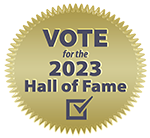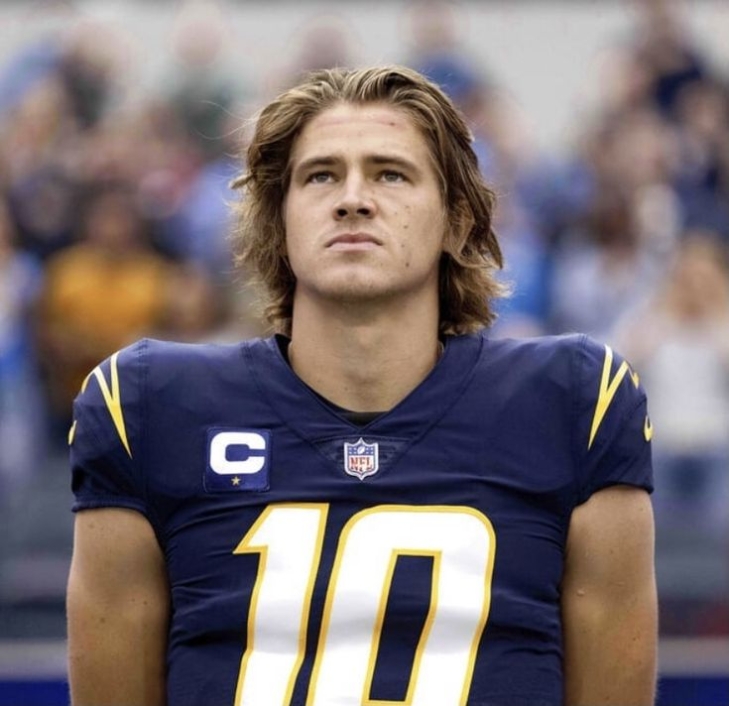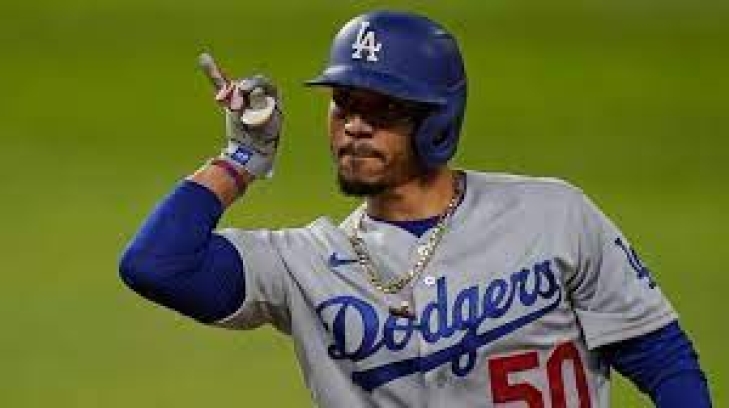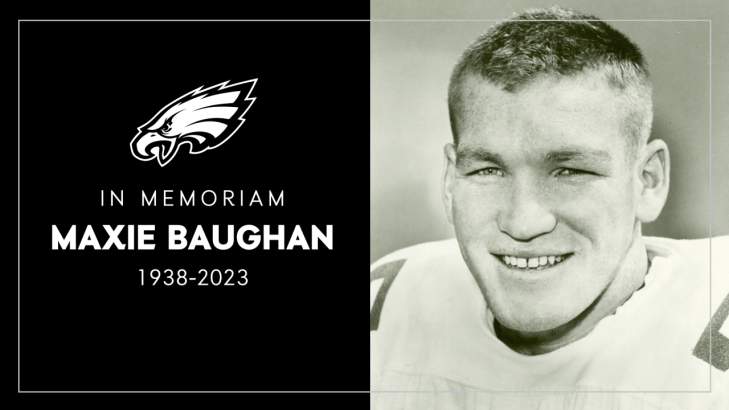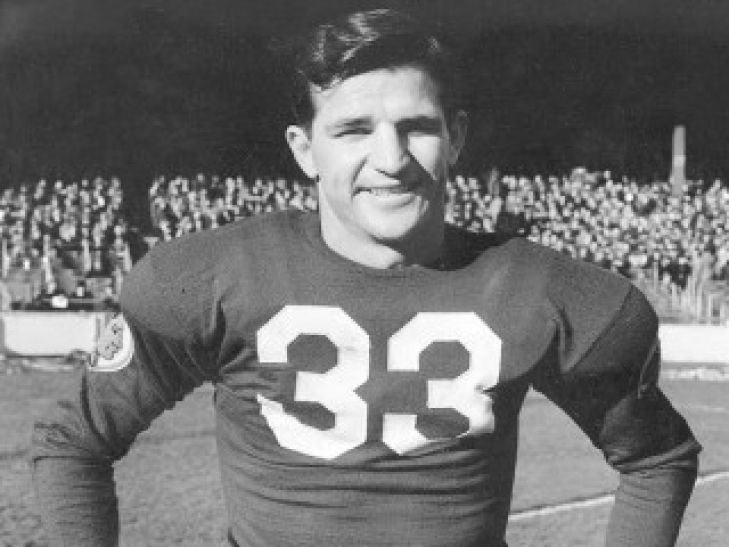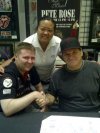
Committee Chairman
Chargers QB Justin Herbert Extends Contract
In July, the LA Chargers signed QB Justin Herbert on a five-year contract extension worth $262.5 million, making him the highest paid QB in history – but what is behind this decision, and why do the Chargers have so much pinned on the handsome, reticent player barely out of his rookie season?
If you are looking for another way to play online, and fancy a break from the Eye of Horus slot games, you might want to look at sports betting and the NFL in particular – and knowing the latest news before the start of the season might help you decide on what to bet on.
Before we delve into Herbert, let’s look at the LA Chargers.
Who are the LA Chargers?
The LA Chargers play in the NFL and their home games are played at the SoFi Stadium, which the team shares with the LA Rams in Inglewood, California.
The team was founded in 1959, and played their first season in the American Football League in 1960.
In 1961, the team relocated to San Diego, and played as the San Diego Chargers for decades, winning the AFL Championships in 1963.
One of the best performances of the Chargers was in 194, when they won the AFC Championship and a place in the Superbowl but lost 49-26 to the San Francisco 49ers.
2017 saw the Chargers return to LA, and since then they have worked hard to remain in the top flight of the AFC West, finishing 2nd last year and earning a place in the Wild Card Playoff, which they unfortunately lost to the Jacksonville Jaguars 31-30.
With the contract extension for Justin Herbert, the LA Chargers are showing that they have big plans for the upcoming season, putting their introverted quarterback at the forefront of their plans for domination.
Why Justin Herbert?
Born in March 1998, Justin Herbert developed his amazing throwing arm in his early life, competing in the softball throw tournaments from the age of 7 and winning again and again. The movement into football was almost a no-brainer, and by his senior year of high school, he was named First Team All-State and awarded the Southwest Conference Offensive Player of the Year at Sheldon High School.
College saw him named as QB2 when he started at Oregon, but he soon became a starter, as his freshman season saw him equalling or setting records for things like passing yards and TD passes. While the 2016 season for his college team wasn’t exactly full of glory, it wasn’t for a lack of talent in their QB, at least. The rest of his college career saw him win the Rose Bowl, the Redbox Bowl, and many personal accolades, including Academic All-American for his 4.08 grade point average in Biology.
When it came to the draft, Herbert was picked sixth overall in the first round, and named as backup QB to Tyrod Taylor. His arrival was watched with interest; his play style and movie-star good looks made him seem to be the ultimate sports personality.
This seemed to be spot on for the fans, as he became the starting QB in just the second game of the year. His awesome skills and extensive power in his throw saw him named as Rookie of the Year and Offensive Rookie of the Year in 2020.
It was in 2021 that Herbert really came to life, smashing franchise records across the field – from completing 5014 passing yards, 38 passing touchdowns, 63 carries for 302 rushing yards, three rushing touchdowns, and 15 interceptions in just one season.
What is the secret sauce that makes Herbert so good – and worth so much?
Well, there is that unnaturally good throwing arm. Even his own teammates sometimes are awed by just how far – and how straight - he can throw. Despite this, he is steady and uncomplicated, humble, and quiet.
Unlike some of the other quarterbacks in the NFL, Herbert seems completely disinterested in the trappings of the position. He Is noticeably uncomfortable in front of a microphone, uneasy when put in the spotlight, and often deflecting personal questions to make them about the performance of the team.
Does this make him a better player? Perhaps, he is certainly more focused on his play, running practice drills until they are perfect with that attention to detail that even his teammates are fascinated with.
This ultra focused player looks the part, with his handsome features and good hair – but the only thing that matters is the football. He has no delusions about his position, often the only player who tidies after himself in the locker room and packs his own holdall before away games.
His third season saw Herbert come out of himself a bit more. Maybe through maturity or being more comfortable with his important position – whatever it is, he was more relaxed in interviews, making jokes on camera, and actively encouraging his teammates.
Whatever the secret is, it has transformed Justin Herbert’s career – he was scheduled to earn $4.23 million in his fourth year for the Chargers, and thanks to his new contract that number is about $52.5 million.
Aug 21 Update: Notinhalloffame MLB Cup Standings.
It is with great pleasure that we continue the third annual Notinhalloffame MLB Regular Season Cup, and let us explain how this works:
With every single regular season game, we anointed the best five players in the game with descending points, 5-4-3-2-1.
We knew the following:
- The top players for the MLB NIHOF Cup are not always the best in the league, as injuries keep players out of games, and a premium on staying healthy can help pile up points. It also does not hurt to be a top player on an average or mediocre team, as they can amass Cup points easier that elite players on loaded squads.
- In Baseball, it is more common than in Basketball and Hockey for a player to accrue points with a single Home Run in a game, and overall favors position players. Starting Pitchers have a hard time with approximately 30-35 Starts and throwing less innings than in previous generations. This also is true for closers, which is not made for this process.
- Please remember, that this is NOT necessarily who we think were the best players this year, and does not reflect overall consistency. Treat this the way did, as a fun process and more of a compilation of temporary statistical domination.
At present 1,009 (up from 994 last week) players have generated at least one Cup Point.
So, MLB players! Get your agents to work winning this into your contracts!
This is the fourteenth update, with standings as of the morning of August 21.
1. Shohei Ohtani: Los Angeles Angels, Designated Hitter & Pitcher: (Ranked #1 Last Week)
188 Cup Points, 123 Games, 1.53 Cup Points per Game, 43 Home Runs, 89 Runs Batted In, 17 SB, .306/.407/.654, 9.4 bWAR & 10-5, 3.17 ERA, 165 SO, 1.064 WHIP.
The Notinhalloffame Cup is built for Ohtani, who can compile points in two different avenues; the only one who can do so. Ohtani continues to grow the gap between himself and his nearest competition, and we can’t see him losing the Cup. After cooling off on the mound, Ohtani is still the American League leader in H/9 (5.9) and ERA+ (142), is third in ERA (3.17) and fifth in Strikeouts (165). With his bat, Ohtani is the current AL leader in bWAR (9.4), Home Runs (43), Triples (7), Walks (77), OBP (.407), Slugging (.664), OPS (1.070), OPS+ (184) and Total Bases (304), while also being second in Runs (95), third in RBIs (89), and forth in Batting (.306). The AL MVP is his to lose, and we don’t think he will.
2. Ronald Acuna: Atlanta Braves, Outfield: (Ranked #2 Last Week)
151 Cup Points, 123 Games, 1.23 Cup Points per Game, 28 Home Runs, 71 Runs Batted In, 56 SB, .331/.417/.569, 6.2 bWAR.
Acuna leads all National League batters in Stolen Bases (56), Runs Scored (112), OBP (.417) and Total Bases (280). He is second in bWAR (6.2) and OPS (.995), third in Batting (.331) and fourth in Slugging (.569). Acuna also holds the eighth-place spot in Home Runs (28).
3. Mookie Betts: Los Angeles Dodgers, Outfield: (Ranked #5, Last Week)
150 Cup Points, 99 Games, 1.12 Cup Points per Game, 34 Home Runs, 86 Runs Batted In, 8 SB, .298/.394/.595, 6.4 bWAR.
Betts has had a great summer, where he made his seventh All-Star Game. In the National League, he took over the top spot in OPS (.989) and bWAR (6.4) this past week and has moved up to second in Slugging (.595) and fifth and Batting (.298) and OBP (.394). Betts has also climbed to third in Home Runs (34) and fourth in RBIs (86).
4. Freddie Freeman: Los Angeles Dodgers, First Base: (Ranked #3, Last Week)
142 Cup Points, 123 Games, 1.14 Cup Points per Game, 23 Home Runs, 83 Runs Batted In, 16 SB, .333/.411/.575, 5.4 bWAR.
Freeman has the NL lead in Doubles (45), OPS+ (163) and Total Bases (280) while also currently placing second in Batting (.333), and third in both OPS and Slugging (.411/.585). He is also second in Runs (102), third in Hits (152) and is seventh in Runs Batted In (83).
5. Matt Olson: Atlanta Braves, First Base: (Ranked #4 Last Week)
141 Cup Points, 123 Games, 1.15 Cup Points per Game, 43 Home Runs, 108 Runs Batted In, 1 SB, .269/.379/.601, 4.9 bWAR.
Olson has the National League lead in both Home Runs (43), RBIs (108) and Slugging (.691). He is also fourth in OPS (.981), ninth in On Base Percentage (.379), and is enjoying the best year of his career.
6. Kyle Tucker: Houston Astros, Outfield: (#7, Last Week)
136 Cup Points, 121 Games, 1.12 Cup Points per Game, 24 Home Runs, 92 Runs Batted In, 24 SB, .296/.376/.525, 3.7 bWAR.
Tucker has been on fire lately and is now the American League leader in RBIs (92). In regards to the Slash Line, Tucker is eighth in Batting (.296), fifth in OBP (.376) and Slugging (.525), while holding strong at fourth in OPS (.901). He is also in the top ten in Hits, Home Runs, Stolen Bases and Extra Base Hits.
7. Juan Soto: San Diego Padres, Outfield: (Ranked #6, Last Week)
133 Cup Points, 125 Games, 1.06 Cup Points per Game, 24 Home Runs, 75 Runs Batted In, 6 SB, .261/.404/.491, 4.0 bWAR.
Soto is the National League leader in Walks (106) and is third in OBP (.404), fifth in OPS+ (150), and sixth in OPS (.895).
8. Rafael Devers: Boston Red Sox, Third Base: (Ranked #9 Last Week)
126 Cup Points, 111 Games, 1.03 Cup Points per Game, 29 Home Runs, 85 Runs Batted In, 2 SB, .274/.347/.530, 3.0 bWAR.
Devers remains a surprise being so high as he was not in the All-Star Game, nor was considered a significant snub. He and is currently fourth in the AL in Home Runs (29), RBIs (85), and Slugging (.530).
9. Christian Walker: Arizona Diamondbacks, First Base: (Not in the Top Ten, Last Week)
122 Cup Points, 121 Games, 1.01 Cup Points per Game, 28 Home Runs, 84 Runs Batted In, 8 SB, .274/.351/.535, 3.8 bWAR.
Corbin Carroll out. Christian Walker in. The Diamondbacks remain represented in the top group with a man who at 32 has never been an All-Star. Walker is at present sixth in RBIs (84) and eighth in Home Runs (28) and Slugging (.535).
10. Alex Bregman: Houston Astros, Third Base: (Ranked #10, Last Week)
119 Cup Points, 124 Games, 0.96 Cup Points per Game, 20 Home Runs, 81 Runs Batted In, 3 SB, .252/.350/.428, 3.6 bWAR.
Bregman remains in the top ten, giving Houston two to join the Dodgers and Braves in the top ten. He moved into fifth in RBIs this week (85).
Arizona’s Corbin Carroll and Miami’s Luis Arraez fell out of the top ten.
Our next update will be the afternoon of August 28.
RIP: Maxie Baughan
Maxie Baughan, who was named as one of the 2024 Pro Football Hall of Fame Senior Finalists, passed away at the age of 85.
An All-American at Georgia Tech, Baughan was Philadelphia’s Second Round Pick in 1960. As a rookie, Baughan was a starting Linebacker for the Eagles 1960 NFL Championship Team. He was named to five Pro Bowls with Philadelphia, including a First Team All-Pro in 1964.
As the Eagles declined, Baughan sought greener pastures, and was traded to the Los Angeles Rams, where he played from 1966 to 1970 collecting four more Pro Bowls to give him nine in total. He retired after the 1970 Season, becoming a coach, though was talked into a brief comeback by Redskins Coach, George Allen in 1974. He retired for good afterward.
Baughan is a member of the Philadelphia Eagles Hall of Fame and the College Football Hall of Fame.
In our latest Notinhalloffame.com ranking of those to consider for the Pro Football Hall of Fame, Baughan was ranked #14.
We here at Notinhalloffame.com would like to extend our condolences to the fans, friends and family of Maxie Baughan.
The Pro Football Hall of Fame Revisited Project: 1947 FINAL VOTE
Here we are! Again!!
If you have been following our Pro Football Hall of Fame Revisited Project, you know that we have asked the rhetorical question…what if the PFHOF began in January of 1946?
After soliciting and obtaining a passionate group of football fans and historians, we sent out a ballot for a Preliminary Vote, which we asked each voter to give us 25 names as their semi-finalists, and 5 in the Senior Pool. Following that, we asked the group to vote for their 15 Finalists in the Modern Era, and 3 in the Senior Category. The final stage was to vote for their 5 Modern Era inductees and 1 Senior inductee.
This is the result of the second official class;
Below, are the final results of this project based on 30 votes:
This is for the “Modern Era”
*Bold indicates they have been elected to the Pro Football Hall of Fame Revisited Class of 1946:
|
Player |
Year of Eligibility |
Vote Total |
|
Ernie Nevers FB |
11 |
25 |
|
Cal Hubbard T-E-DE-G |
6 |
19 |
|
Dutch Clark TB |
4 |
14 |
|
Ed Healey T-G-E |
16 |
12 |
|
Paddy Driscoll HB-QB-TB-BB |
13 |
12 |
|
Pete Henry T |
14 |
11 |
|
George Trafton C |
11 |
10 |
|
Johnny Blood TB-HB-WB-BB-DB |
4 |
10 |
|
Guy Chamberlin E-WB |
15 |
9 |
|
Benny Friedman TB-DB |
8 |
9 |
|
Duke Slater T |
11 |
7 |
|
Lavvie Dilweg E |
8 |
6 |
|
Clark Hinkle FB-LB-HB-DB |
1 |
6 |
|
Joe Guyon WB-TB-BB-FB |
15 |
4 |
|
Link Lyman T |
8 |
1 |
This is for the “Senior Era”
*Bold indicates they have been elected to the Pro Football Hall of Fame Revisited Class of 1946:
|
John Brallier |
N/A |
14 |
|
Charles Follis |
N/A |
12 |
|
Blondy Wallace |
N/A |
5 |
About the 1947 Inductees:
Ernie Nevers FB, DUL 1926-27, CRD 1929-31: Inducted in 1947 on the 2nd Ballot (technically his 11th year of eligibility). Was inducted into the actual Pro Football Hall of Fame in 1963.
Stanford Head Coach, Pop Warner, called Ernie Nevers a “player without a fault” and if that does not say it all, we don’t know what does. Following his career at Stanford, Nevers first played professional football for a team in Jacksonville, Florida, which he left to play professional baseball for the St. Louis Browns. When the Browns season ended, the dual-sport star returned to the gridiron for the Duluth Eskimos, where the team played 29 Games (14 official in the NFL) and Nevers allegedly played every minute of every game. Following Duluth’s poor 1927 Season (though Nevers was outstanding), Nevers did not play football in 1928, but re-emerged in 1929 with the Chicago Cardinals. With the Cardinals, Nevers set a record by scoring all 40 Points in Chicago’s 40-6 win over the cross-town Bears. The game before, he scored all 19 of his team’s Points! Nevers was the ultimate Fullback for his day, and in all five seasons he played, was named a First Team All-Pro, and he was also a 1920s All-Decade Selection.
Cal Hubbard T-E-DE-G, NYG 1927-28 & 1936, GNB 1929-33 & 1935 & PIT 1936: Inducted in 1947 on the 2nd Ballot (technically his 6th year of eligibility). Was inducted into the actual Pro Football Hall of Fame in 1963.
Weighing in at 250 Pounds, Cal Hubbard was a large man for the 1920s and 1930s, and was also incredibly fast and strong. Considered one of the best Linemen of his day, Hubbard won four NFL Championships (one with New York and three with Green Bay). A First Team All-Pro on four occasions, he was named the NFL’s All-Time Offensive Tackle in 1969.
Dutch Clark TB, PRT 1931-32 & DET 1934-38: Inducted in 1946 on the 2nd Ballot (technically his 4th year of eligibility). Was inducted into the actual Pro Football Hall of Fame in 1963.
Dutch Clark had an unusual trip to the Pro Football Hall of Fame, one that reflects the unique nature of the game in the 1930s. Clark was an All-American at Colorado College, and while he graduated in 1929, he didn’t play professional until 1931, playing two years with the Portsmouth Spartans as their offensive leader. Throwing, rushing and kicking, Clark was an automatic leader, but he opted out, taking the Head Coaching job at the Colorado School of Mines. That lasted a year, and Clark returned to the Spartans, who were now the Detroit Lions. Clark led Detroit to the 1935 NFL Championship, and was a six-time First Team All-Pro. A greater gridiron leader, the Lions could not have found in the 30s.
Ed Healey T-G-E, RII 1920-22 & CHI 1922-27: Inducted in 1947 on the 2nd Ballot (technically his 16th year of eligibility). Was inducted into the actual Pro Football Hall of Fame in 1964.
From Dartmouth, Ed Healey began his pro career for the Rock Island Independents. In a 1922 game against the Chicago Bears, the Tackle was so good, that Bears Player/Coach/Owner, George Halas, bought the contract of Healey, marking the first time a player was sold in the NFL. Healey was a First Team All-Pro for Chicago in his first four years as a Bear, and was considered the most versatile Tackle in the game.
Paddy Driscoll HB-QB-TB-BB, CHI 1920 & 1926-29, & CRD 1921-25: Inducted in 1947 on the 1st Ballot (technically his 13th year of eligibility). Was inducted into the actual Pro Football Hall of Fame in 2005.
John “Paddy” Driscoll was a “Mr. Everything” of sorts for the Chicago Cardinals, the team that bid for, and won his services when they became a charter member of the NFL in 1920. Driscoll was a small man (5’ 11” and 160) but did it all on both sides of the ball, and as their kicker. An expert rusher and passer (for his era), Driscoll once dropkicked four Field Goals in a game and had a 27 Point Game in 1923. A three-time First Team All-Pro with the Cardinals, he led them to a Championship in 1925. Driscoll then joined the rival, Chicago Bears, in 1926, where he was named to two more First Team All-Pros.
John Brallier: Inducted in 1947 on the 2nd Senior Ballot. Was never inducted into the Pro Football Hall of Fame.
A valid criticism of the PFHOF is that it has taken little account to those who laid professional football’s groundwork. This was rectified last week with the induction of Pudge Heffelfinger and now this “year” with John Brallier. The first openly paid football player when he was given $10 in 1895 to play for the Latrobe Athletic Association at age 17, Brallier played for many other teams before he went to college. He returned to Latrobe in 1902 as a player/coach and led his squad to four undefeated seasons.

